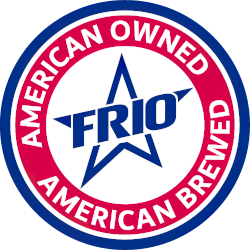The Important Role of Malt in Brewing Beer
The Important Role of Malt in Brewing Beer
The word ‘malt’ probably brings up childhood memories of chocolate covered malt balls and malted milk shakes. So, you may be surprised to learn that malt is a big part of beer brewing, too, and has been a part of beer brewing for thousands of years.
With the beginnings of beer in ancient Egypt and Mesopotamia, brewers experimented with malts and practically perfected the craft. Their malts, not surprisingly, were made on a much smaller scale than most malts are made on today.
Malts weren’t mass produced until the 17th century when floor malting was the new malting method. This allowed for much larger amounts of malt to be made at once. This was so efficient that it replaced all other smaller forms of malting.
Floor malting was very labor intensive though -- laborers had to flip giant loads of grains with small wooden shovels over and over until malting was complete. This method was replaced in the 1850s with the coming of the Industrial Revolution. Once that came about, nearly everything was mechanized.
Why Do We Need Malts?
Why Do We Need Malts?
The most common grain used for malts is barley (2-row and 6-row), but wheat, corn, rice, rye, and oats can also be used. Barley is so popular because of its high starch content (65%). Starches are what get converted to sugars, which are necessary for the fermentation process.
Malting -- Step by Step
Malting -- Step by Step
If the grains have sprouts growing out of them, the sprouts will mess with the final beer product. So, just before the sprout starts growing is the perfect time to move on to the next step.
Now that the grains, referred to as ‘green malt’ now, are open and more suitable for fermentation, the grains are heated to stop the germination process. The grains are gradually raised to about 120 F until they are completely dried out.
This process activates the enzymes, starch, and proteins in the grains. Once heating is done, the brewer will then put these grains back into water, but this time the water is hot. The hot water is called ‘strike water,’ and it allows the grains to produce sugars.
Those sugars get dissolved into the strike water, creating something called ‘wort.’ This wort is what is used during fermentation to make beer. Oftentimes brewers need to mash the grains further to release more starch. The mash temperature can affect the taste of the finished beer.
Lower mash temperatures (130-150 F) create drier beers while higher mash temperatures (150-160 F) make sweeter beers.
How Malts Affect Beers
How Malts Affect Beers
For example:
- Pale ales are made by lightly heated malts and ale yeast. Similarly, if you use lightly heated malts and a lager yeast, you’ll get a light lager.
- Medium roasted malts that end up with a golden color create amber ales, or amber lagers. These usually end up with a sweeter taste than lighter (in color) beers.
- Medium-high heated malts lead to dark ales and lagers. These are often described as ‘clean’ tasting beers.
- High-temp malts create the darkest beers -- porters and stouts. Darker beers like these can have coffee or chocolate notes because of the way the grains were heated.
The usual assumption is that darker beers are stronger beers, meaning they have a higher alcohol content. You might be surprised to find out that that is actually not the case. Deep roast malts are liable to lock in the starches and glucose into the grains.
The higher roast temperatures that the malt is subject to will harden the grains, meaning that there will be less for the yeast to react with… leading to a lower ABV.
Beers made with high-temp malts are ‘thicker’ because of this. The grain particles that were not able to be fermented into alcohol are left in the beer, giving it a heavier, richer feel.
Besides color and possible ABV, different malts can affect flavor, too. There is a wide range of malts that brewers can choose to use. Lager malts, Vienna malts, chocolate malts, and Munich malts all produce different, unique flavors.
Malts also affect the amount of carbohydrates and gluten are in the finished product. The way malts are made are what makes a beer a beer. Without malts, beers wouldn’t be that perfect shade of gold or amber that we’re all so used to.
Can Malts Be Gluten Free?
Can Malts Be Gluten Free?
Grains to watch out for, in addition to barley, are wheat, rye, and oats. Gluten free grains used for malts are corn and rice, but those aren’t very popular. Whatever your dietary restrictions, there’s a brewery out there for you. Just do a simple online search.
Related articles
How Can Light Beer Like FRIO Have Zero “0” Grams of Sugar?
Beer has a reputation for causing beer bellies and weight gain, and its reputation is not wrong.
READ NOW
Can You Drink Beer on a Low Carb Keto Diet?
The ketogenic ("keto") diet is a popular diet trend. Is beer compatible?
READ NOW
The Remarkable History of Beer – Part 1
Beer has been an incredibly popular drink since 7,000 B.C.E. Beer played a key role in Human History.
READ NOW
10 Fascinating Facts About Women's Role in Brewing Beer
How did women first begin brewing beer, and how did beer brewing turn into such a masculine job?
READ NOW
The Remarkable History of Beer – Part 2
Before the Spanish arrived, Native Americans brewed beer with corn..
READ NOW
What's the Difference 2-row & 6-row Barley?
2-row barley grows only two columns of barley kernels, while 6-row barley grows 6 columns of kernels.
READ NOW



